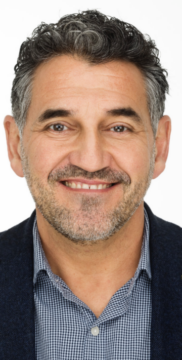Breast Reconstruction
Services
Breast Reconstruction
Meet your doctor

Dr Jose Cid Fernandez
Book a consultation
A breast reconstruction is carried out to recreate the appearance of a breast after a mastectomy, preferably during the same operation, or if not possible as a delayed second procedure usually several months later. It is well recognised that a reconstruction helps with the physical, emotional, and psychological recovery after a mastectomy.
The two main surgical options for breast reconstruction include the use of tissue expanders (silicone bags that can be expanded with saltwater) and silicone gel implants, or the use of autologous tissue, that is skin and tissue taken from other parts of the body, such as the lower abdomen, thighs, buttocks or back.
All forms of breast reconstruction usually require more than one operation to achieve the desired final result.
Implant and Tissue Expander Breast Reconstruction
Techniques used can be one-stage implant directly after mastectomy, or two-stage procedures i.e. tissue expander first, then replacement of the tissue expander for an implant several months later. These are relatively small procedures initially, with rapid recovery time, but further future operations are often required for maintenance.
Silicone breast implants are safe and can achieve very good reconstruction results, especially in small non-sagging breasts (C-cup or less). However, breast implants are not suitable to everyone. For example, if we anticipate that you will require radiotherapy after a mastectomy this could impair the overall aesthetic result of your implant reconstruction, and increase the risk of complications, such as poor wound healing and formation of scar tissue around the implant, altering its shape.
The ALCL Issue
In recent years certain implants with a rough outer surface have been linked with a risk of a rare type of cancer called Anaplastic Large Cell Lymphoma (ALCL). These coarser implants have now been withdrawn from the market and the smoother implants that we use for breast reconstruction have a very low risk of ALCL (approximately 1 in 80,000).
If you need a mastectomy and wished to consider implant breast reconstruction you will have ample opportunity to discuss your suitability for this procedure, as well as the limitations and potential risks of this type of surgery.
Autologous Tissue Reconstruction
These techniques involve using flaps of skin and fat from other parts of your body, and occasionally muscle from your back, to recreate a breast. They provide a more natural appearance, particularly in the larger breast, and are more resistant to the effects of radiotherapy. These potential advantages are at the expense of longer complex surgical procedures, which also require longer recovery time.
Autologous Fat Grafting
Also called lipofilling, this is a useful technique that involves harvesting fat from your body by liposuction, then concentrating it and injecting it into breast defects or scars to improve the breast appearance. It is a very useful technique, that is being increasingly used to ‘fine tune’ the aesthetic results of breast reconstructions, particularly implant-based reconstructions, as well as of other breast procedures, and to correct breast deformities.
Nipple Reconstruction
This is often carried out as a day procedure and as one of the ‘finishing touches’ during the last step of your breast reconstruction. After healing has occurred a new ‘areola’ can be recreated by tattooing. Nipple-areola reconstruction completes the reconstructed breast and leads to increase satisfaction and an overall sense of ‘completeness’.
Practice Location
Perth Breast Cancer Institute
- Suite 405, Level 4, Hollywood Consulting Centre, 91 Monash Avenue, Nedlands 6009
- 08 6500 5570
- reception@drjose.com.au
- 08 6500 5577








